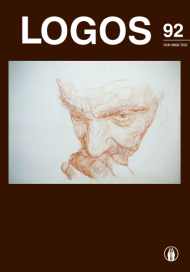„Beaistrė aistra“ Grigaliaus Nysiečio In Canticum Canticorum
“Dispassionate Passion” in Gregory of Nyssa’s ‘In Canticum Canticorum’
Author(s): Tatyana Solomonik-PankrašovaSubject(s): Christian Theology and Religion, Aesthetics, Philosophy of Religion
Published by: Visuomeninė organizacija »LOGOS«
Keywords: St. Gregory of Nyssa; apophatic theology; anagogic ascent; image; oxymoron;
Summary/Abstract: It is the anagogic ascent (αναγωγή) of the Soul – the image of the Image – to the Archetypal Beauty (κάλλος) that lies at the heart of Byzantine aesthetics. In view of aesthetica interior (monastic aesthetics), the dwelling place of Beauty is the secret chamber of one‘s heart. The Soul’s kinship with the divine, the search for God and a reluctance to be satisfied with anything less than Him lies at the heart of Christian mysticism. The Soul is attracted by the Ineffable Beauty that is beyond the grasp of senses. This is where the tradition of Byzantine aesthetics meets Christian mystical tradition. Because the Soul is “wounded” by the Beauty of the Divine, it is inclined to escape the darkness of the sensuous world, admiring the Ineffable Beauty of the Divine. This article aims at deciphering the allegory of the Soul who puts on “the raiment of light” clinging to the Bridegroom through love in the In Canticum Canticorum by St. Gregory of Nyssa. My argument proceeds in the following way: first, to unravel the allegorical portrayal of the Soul as a Sister and a Bride – a reflection of the Ineffable Beauty, and, second, to unveil “the erotic images of the noetic imageless” – with reference to the rhetorical figure of speech, viz., oxymoron.
Journal: LOGOS - A Journal of Religion, Philosophy, Comparative Cultural Studies and Art
- Issue Year: 2017
- Issue No: 92
- Page Range: 18-25
- Page Count: 8
- Language: Lithuanian

